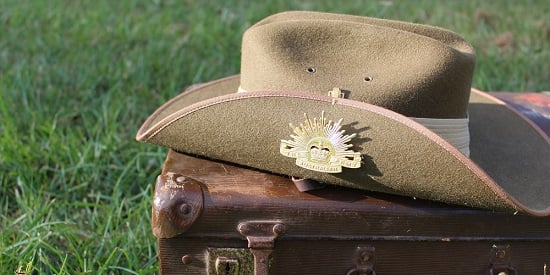Deakin expert outlines the history behind today's modern 'Anzac 2.0'
Media release
The "Anzac 2.0" recognised by today's Australians is very different to the Anzac legend of the past, thanks in part to pop culture and the political machinations of the 1990s, according to a Deakin historian.
Dr Carolyn Holbrook, author of the 2014 book Anzac: The Unauthorised Biography, said the history of how Australians remembered the First World War and acknowledged Anzac Day had been influenced by political opportunism.
"The modern version of Anzac - Anzac 2.0 - was born in 1990, as the political class stepped in the breach created by the decline of the RSL," Dr Holbrook said.
"During the 1960s and 1970s the Anzac mythology was increasingly met with apathy and hostility. The early Anzac myth centred on the fighting ability of Australia soldiers, and it suffered from imperialist and racist connotations.
"But that thinking began to shift into a grassroots revival thanks to the popularity of books and films like Bill Gammage's The Broken Years, Patsy Adam Smith's The Anzacs and Peter Weir's 1981 film Gallipoli.
"They showed a form of Anzac that was noticeably different from its discredited predecessor. Anzac 2.0 was all about mateship, suffering and sacrifice; its heroes weren't hardened warriors or the old codgers who got drunk each Anzac Day, but naïve young men like Archie Hamilton from the film Gallipoli, whose sacrifice gave birth to Australian nationhood."
Dr Holbrook said the Hawke Government capitalised on this shift in opinion by funding the 1990 pilgrimage to Gallipoli for 52 diggers, an event that was heavily promoted and covered by the Australian media.
"Press reports at the time remarked upon the revival of Anzac Day and its superiority over Australia Day as the national day of celebration, and there were editorials noting how the Anzac spirit was now 'more to do with mateship and sacrifice than conquest and power'," she said.
"Once the authority of the Prime Minister and the resources of the state swung behind this kinder, gentler version of Anzac, it developed an unstoppable momentum. And as the image of the invincible fighting Anzacs was replaced with focus on the suffering of soldiers and their trauma, it created a more acceptable space within which to perpetuate Anzac commemoration."
Dr Holbrook said today's Anzac 2.0 was the product of many factors, including the rise of family history and genealogical studies driven by war records, political patronage and battlefield tourism, and the taste in our culture for tales of trauma and suffering.
"The way Australians experience and celebrate Anzac is complex and multi-faceted," she said.
"People attach different meanings to the Anzac legend according to their own experience and needs. Though Anzac is sometimes invoked by jingoists and racists, it would be overly simplistic to conflate Anzac commemoration with excessive, celebratory nationalism.
"Many decent, thoughtful Australians also feel a sentimental attachment to Anzac; they take inspiration from its appeals to service, comradeship, stoicism, duty (a concept that has slipped from fashion) and good humour in the face of extreme adversity and defeat."
Dr Holbrook is co-editor of a new collection of essays, The Great War: Aftermath and Commemoration, with Federation University's Professor Keir Reeves.

